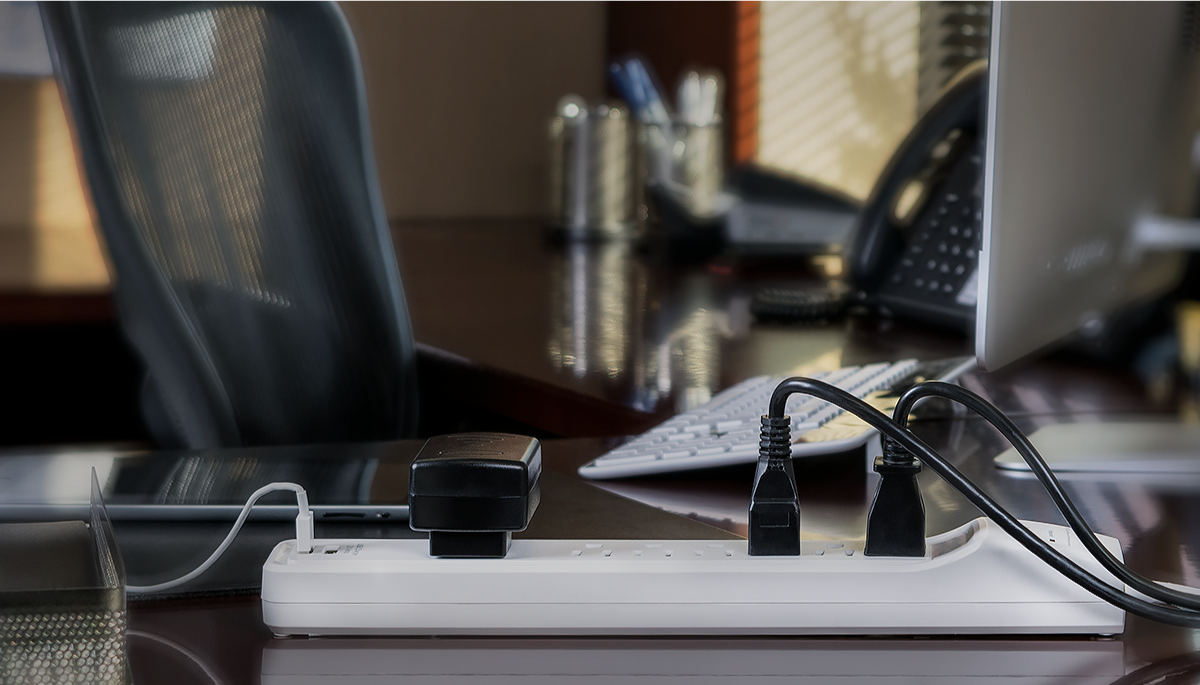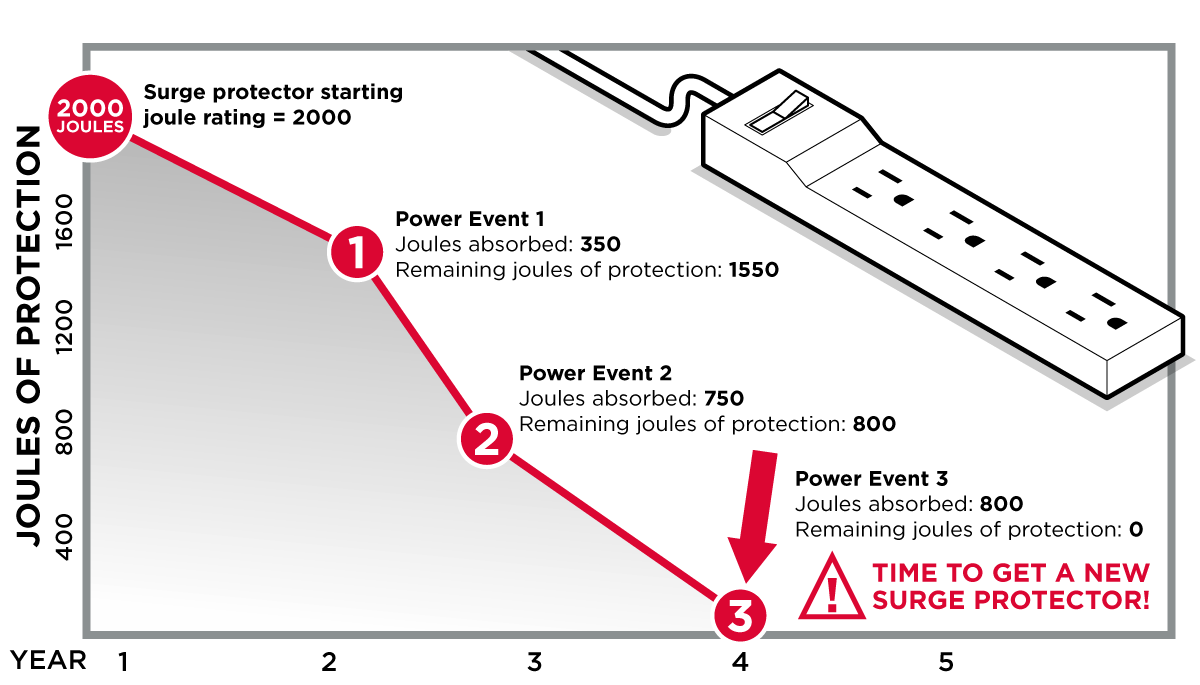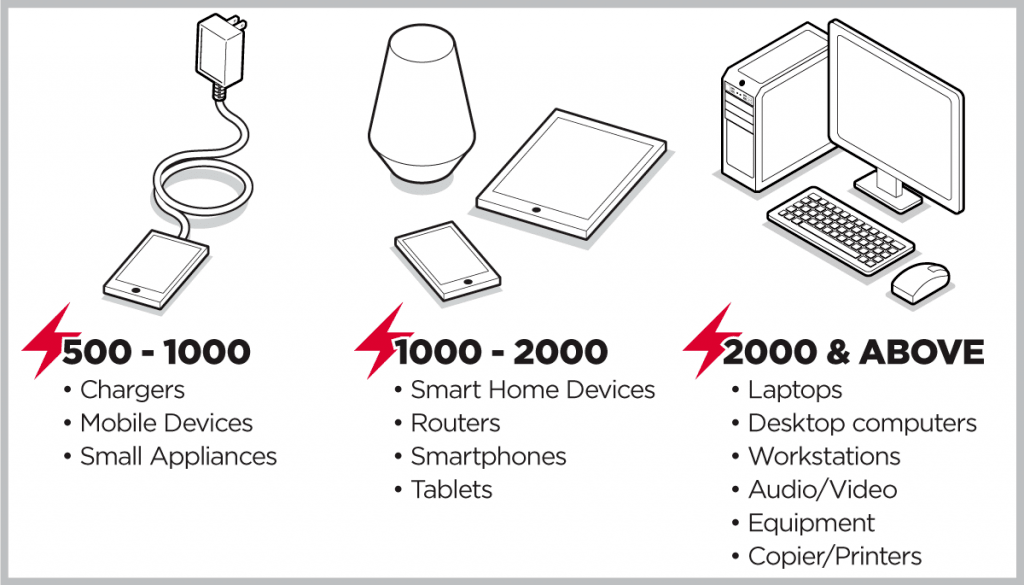
Every home and business experiences power surges and spikes. The U.S. is hit by over 20 million lighting strikes every year, but lightning isn’t the greatest threat. Most power surges are generated from power utility spikes and large electronics cycling on and off. In fact, these sudden power surges may occur a dozen times a day, upsetting the steady voltage flow in the electrical system. These smaller, repeated power surges may damage your electronics and can eventually cause devices to malfunction. Unlike high-level power surges, low-level surges won’t blow fuses or trip circuit breakers, but they can cause gradual degrading of internal circuitry and permanently damage equipment.
Joules are the key to surge protection.
Whether it is a severe power event or frequent electrical surges, your equipment needs to be safeguarded by surge protection.
With surge protection, it’s about joules. The joule rating of your surge protector determines how much energy your surge protector can absorb. The higher the joule rating, the greater the protection.
What is a joule?
A joule is a unit of measurement of energy released over time. A surge protector joule rating indicates how much energy it can absorb before it fails. Energy is expressed in watts. A watt is the amount of energy (in joules) that an electrical device is burning per second. The conversion formula from watts to joules is:

For example, a 60W lightbulb burns 60 Joules of energy for every second it’s lit up. A surge protector with 3,000 joules can absorb energy surges totaling up to 3,000 joules. It’s important to note that surges have a cumulative effect. Each time a surge occurs, the joules required to absorb the surge are permanently destroyed.
Therefore, with enough surges, the joules will all be depleted, and the surge protector will no longer be effective. For example, if a surge protector with 800 joules absorbs eight surges of 100 joules each, it will no longer offer any surge protection.

How a joule works in a surge protector.
The number of joules is dependent on the number and size of Metal Oxide Varistors, also known as MOVs. Multiple MOVs work together to give a surge protector its joule rating. As shown in the example below, an 1800-joule surge protector will most likely have three 600-joule MOVs. Surge protection is also offered on Uninterruptible Power Supply (UPS) systems, with outlets marked as either “surge protection” or “battery backup”.

How many joules do I need?
When deciding on how many joules you need, remember that joules are lost by each surge and the number of original joules will decrease over time. The rule of thumb is the higher the value of your equipment, the higher the joule rating should be. Below is a chart of recommended joule ratings to protect various devices:

Any electrical device containing a microprocessor needs surge protection because even a 10-volt fluctuation can disrupt operation. Microprocessors are found in most home and office electronics including computers, networking equipment, point-of-sale devices, printers, modems, phones, and audio/visual equipment.
Watch out for the lights!
Most surge protectors have an LED light to indicate surge protection is active and protecting connected electronics. However, the indicator light won’t show you how many joules are left until the joules are totally depleted. If that happens, the light goes out and it means the surge protector absorbed the maximum energy from power events. Most CyberPower surge protectors are designed to stop providing power once their joules have been depleted. Since the surge protector is no longer offering any protection, it’s time to replace your surge protector.
Depending on how many power surges occur, surge protectors will gradually lose power protection and generally last three to five years. If you’re unsure the status of your surge protectors, it’s better to replace them with ones with higher joule ratings that include LED lights to indicate connected electronics are protected.
Proactively protect your electronics.
You can protect your important equipment against damaging power spikes and surges with a surge protector. But remember, not all surge protectors are created equal. Ensure your most valuable devices and equipment are connected to surge protectors with high joule ratings. Further, monitor your surge protectors regularly (especially after inclement weather) to ensure your valuable devices are protected.
CyberPower can help you find the right surge protector for your needs. Visit our Surge Selector or Choosing a Surge Protector. CyberPower is your ultimate ally in power and provides solutions to all your power protection needs.


